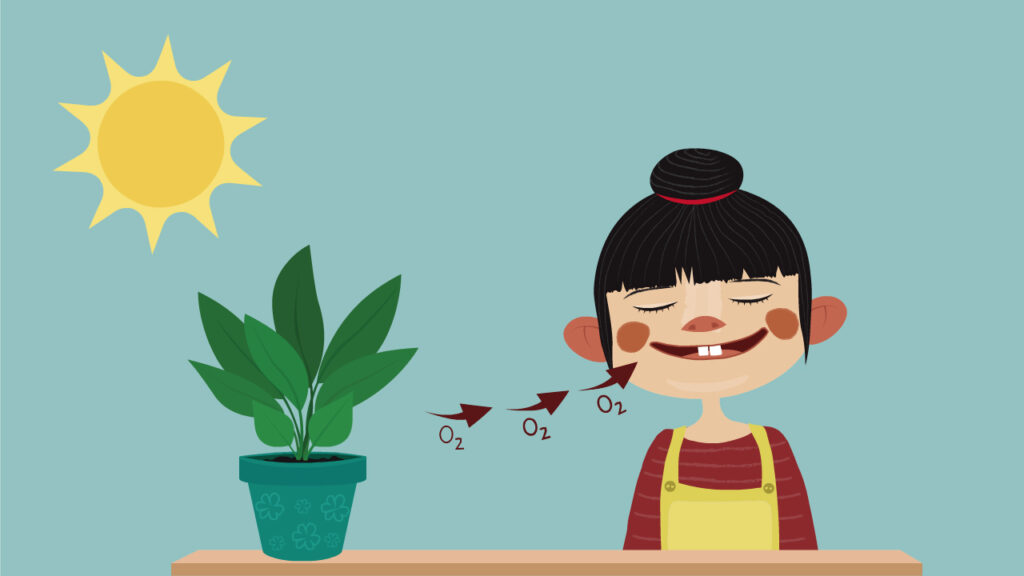Photosynthesis: Unveiling the magic of Green Symphony

The dance of the sun with the whisper of leaves here, in the magical region of photosynthesis, arranges the symphony of life. The secrets of one of nature’s most interesting processes, photosynthesis, will be revealed in this blog post.
The Basics of Photosynthesis:
Definition:
The process by which green plants, algae, and even some bacteria convert light energy into chemical energy, a process known as photosynthesis, is a miraculous way that life on Earth is sustained.
The Players:
Let’s meet the stars of the show: the chlorophyll molecule. These green pigments, which live in the chloroplasts of plant cells, are the orchestrators that take in light and play music.
The Three Acts of Photosynthesis:

Act 1: Light Capture:
As the sun shines on plants, chlorophyll absorbs light, mostly in the red and blue parts of the electromagnetic spectrum. This absorption begins the process of converting the energy into something else.
Act 2: Water Waltz:
During this entire process, water molecules disintegrate into oxygen, electrons and protons. Oxygen is being released into the air as electrons and protons set out on a dynamic adventure.
Act 3: Carbon Ballet
During the final stage, carbon dioxide extracted from the air undergoes a sophisticated sequence of chemical reactions called the Calvin cycle to produce glucose and other sugars. This marks the grand finale, as the energy stored in glucose is transformed into energy for the plant and, as a result, the entire food web.
The Ecosystem Harmony:
Photosynthesis is not just an individual endeavor; It is a harmonious cooperation that resonates throughout the ecosystem. Plants are the main source of food for herbivores, which later become food for carnivores. This complex interaction maintains the balance of life on our planet.
Environmental Influences:

The Weather Sonata
Temperature, sunlight and water availability are important factors in coordinating the photosynthesis process. Modifications to these elements can affect the effectiveness of the process.
Human Notes
Human actions, such as pollution and forest loss, create discordant tones that upset the natural balance of photosynthesis. Recognizing our impact is essential to maintaining the delicate balance of our ecosystems.
conclusion:
As we conclude our investigation of photosynthesis, let’s appreciate the beauty of this complex interaction between light, water, and carbon dioxide. Understanding this process holds the key to the sustenance of life and emphasizes our duty to protect the delicate ecosystems that depend on this natural harmony.
Table of Contents
Why is it called photosynthesis?
The word “photosynthesis” comes from the Greek words: “photo”, meaning light, and “synthesis”, meaning putting together or combining. Therefore, photosynthesis can be directly translated as “combination with light”. The name perfectly reflects the basic process through which green plants, algae and some bacteria use light energy to produce organic compounds such as glucose from carbon dioxide and water. Basically, it is the mechanism by which light is converted into chemical energy, which serves as the energy source for life on our planet. The name encapsulates the process perfectly, highlighting the importance of light in facilitating the formation of essential organic compounds.
What is the 5 importance of photosynthesis?
1) Oxygen Production: Photosynthesis plays an important role in providing oxygen to the Earth’s atmosphere. During the entire process, plants emit oxygen as a byproduct when water molecules break apart. Oxygen plays an important role in the respiration of various organisms like humans. It is important to preserve the atmospheric balance necessary for the survival of aerobic life forms.
2) Energy Source for Life: Photosynthesis produces organic molecules such as glucose and other sugars, which are used as fuel by most living things. Just as plants use these molecules for energy, similarly herbivores, omnivores and carnivores get their energy from eating vegetarian food. In conclusion, photosynthesis is essential for all forms of life in ecosystems and serves as the base of the food chain.
3) Carbon Dioxide Regulation: One of the main ways to control atmospheric carbon dioxide levels is through photosynthesis. Plants take carbon dioxide from the atmosphere and convert it into other organic molecules as part of this process. In addition to supplying carbon for sugar synthesis, it also helps reduce atmospheric carbon dioxide levels, which in turn helps keep the planet’s climate stable.
4) Biomass Production and Agriculture: Plants rely on organic compounds produced by photosynthesis as their structural foundation. Biomass, which includes plant components including wood, leaves, and fruits, is created through this process. Since photosynthesis affects a plant’s ability to make food for humans and other animals, it is essential to understand and optimize this process in agriculture to increase crop yields.
5) Ecosystem Stability: The process of photosynthesis is essential for the preservation of ecological harmony. The energy moving through the food chain starts with plants, as they are the main producers. Photosynthesis ensures a constant supply of organic matter, which is essential for the interdependence of species in an ecosystem. The entire ecosystem is vulnerable to disruption in this process due to the domino effect.